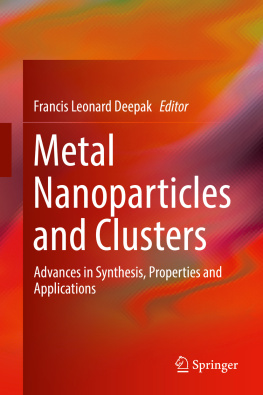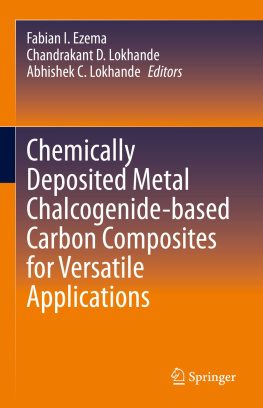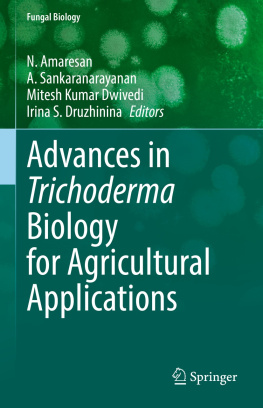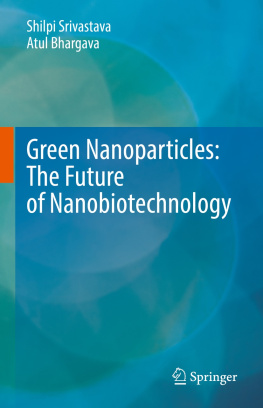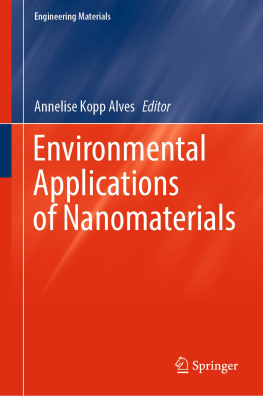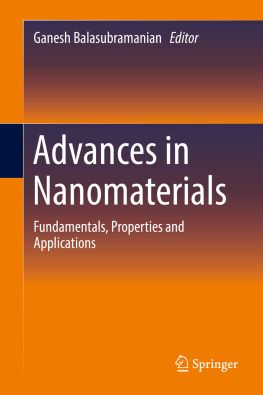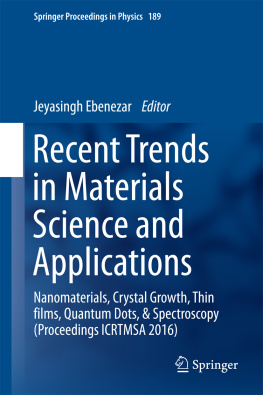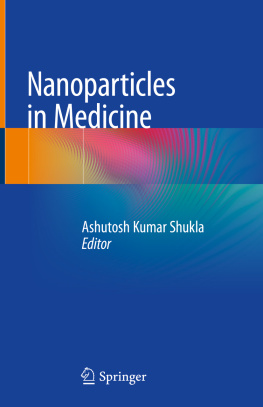Deepak - Metal nanoparticles and clusters: advances in synthesis, properties, and applications
Here you can read online Deepak - Metal nanoparticles and clusters: advances in synthesis, properties, and applications full text of the book (entire story) in english for free. Download pdf and epub, get meaning, cover and reviews about this ebook. City: Cham;Switzerland, year: 2018, publisher: Springer International Publishing, genre: Home and family. Description of the work, (preface) as well as reviews are available. Best literature library LitArk.com created for fans of good reading and offers a wide selection of genres:
Romance novel
Science fiction
Adventure
Detective
Science
History
Home and family
Prose
Art
Politics
Computer
Non-fiction
Religion
Business
Children
Humor
Choose a favorite category and find really read worthwhile books. Enjoy immersion in the world of imagination, feel the emotions of the characters or learn something new for yourself, make an fascinating discovery.
- Book:Metal nanoparticles and clusters: advances in synthesis, properties, and applications
- Author:
- Publisher:Springer International Publishing
- Genre:
- Year:2018
- City:Cham;Switzerland
- Rating:5 / 5
- Favourites:Add to favourites
- Your mark:
- 100
- 1
- 2
- 3
- 4
- 5
Metal nanoparticles and clusters: advances in synthesis, properties, and applications: summary, description and annotation
We offer to read an annotation, description, summary or preface (depends on what the author of the book "Metal nanoparticles and clusters: advances in synthesis, properties, and applications" wrote himself). If you haven't found the necessary information about the book — write in the comments, we will try to find it.
Deepak: author's other books
Who wrote Metal nanoparticles and clusters: advances in synthesis, properties, and applications? Find out the surname, the name of the author of the book and a list of all author's works by series.
Metal nanoparticles and clusters: advances in synthesis, properties, and applications — read online for free the complete book (whole text) full work
Below is the text of the book, divided by pages. System saving the place of the last page read, allows you to conveniently read the book "Metal nanoparticles and clusters: advances in synthesis, properties, and applications" online for free, without having to search again every time where you left off. Put a bookmark, and you can go to the page where you finished reading at any time.
Font size:
Interval:
Bookmark:

- 1. The leading phenomena observable on NPs, i.e. magnetic surface effects in magnetic nanoparticles, or superparamagnetism, the size-dependent surface plasmon band resonance and melting point, are mainly scalable effects arising from the large surface-to-volume ratio of lattice ions in small particles; smoothly scaling properties which evidence the dominating role surface ions vary as the inverse of the particle size and extrapolate continuously up to the bulk values.
- 2. The discrete energy levels and shell-like physical properties, i.e. the so-called magic numbers, that appear in AQCs, are due quantum confinement effects that emerge when certain dimensions of the particle are smaller than characteristic physical lengths like the de Broglie or the Fermi wavelength.
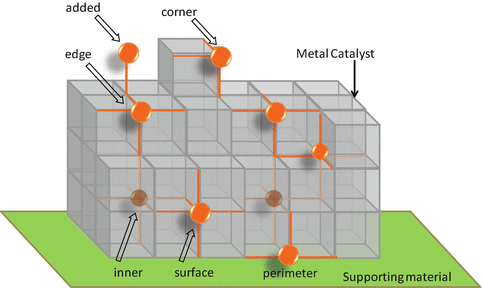
- Shrinking the interatomic distances of surface atoms, which therefore changes the bulk lattice structure into another one much more closely packed (i.e. bulk Au is cubic, while the surface Au is hexagonally closely packed)
- Inducing oscillating charge profile between subsequent layers, i.e. ion pair formation as in NaCl, where Na+ ions are displaced towards the bulk and Cl ions are displaced outwards to the surface
- Surface segregation mechanisms in materials composed by more than one type of atom, where one of the species diffuses from the core and accumulates on the surface, i.e. in alloys the component with the lower melting diffuses to the surface and lowers the total surface energy (i.e. in silver/gold alloys, silver accumulates on the first layer)
- Adsorption of molecules on the surface that allows for the energy lowering
Font size:
Interval:
Bookmark:
Similar books «Metal nanoparticles and clusters: advances in synthesis, properties, and applications»
Look at similar books to Metal nanoparticles and clusters: advances in synthesis, properties, and applications. We have selected literature similar in name and meaning in the hope of providing readers with more options to find new, interesting, not yet read works.
Discussion, reviews of the book Metal nanoparticles and clusters: advances in synthesis, properties, and applications and just readers' own opinions. Leave your comments, write what you think about the work, its meaning or the main characters. Specify what exactly you liked and what you didn't like, and why you think so.

